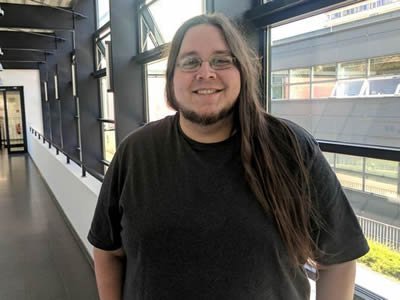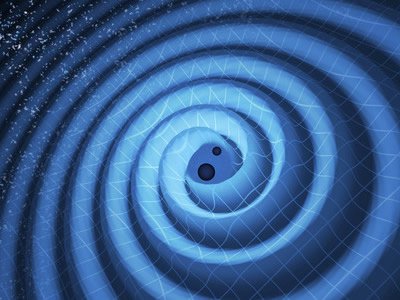
by Laura Wallis
Alexander Nitz, associate professor in the Department of Physics, has been awarded a grant from the National Science Foundation (NSF) for his project, Gravitational-Wave Astronomy and Astrophysics at Syracuse University.
The three-year grant, led by Nitz and co-principal investigator Duncan Brown, Charles Brightman Endowed Professor of Physics and Syracuse University’s Vice President for Research, will support the development of new search algorithms in the rapidly expanding field of gravitational-wave astronomy. This project is just one of the ways that Nitz, Brown, and a team of other Syracuse faculty will be leading the way in astrophysics research, with the opening of the Center for Gravitational Wave Astronomy and Astrophysics (CGWAA) this fall.

Unlike standard astronomy, which relies upon light, gravitational-wave astronomy involves the detection and measuring of gravitational waves, which are ripples in space-time formed by rapidly accelerating matter. Extreme events throughout the universe—black holes orbiting each other at nearly the speed of light and then merging, neutron stars colliding — can be observed in this way. It is still a very young field; although construction of the earliest detectors began in the 1960s, it took many years of improving the sensitivity of the equipment before the first observation was made in 2015.
Both Syracuse and Professor Nitz have been key in helping to make early strides in gravitational astrophysics. Nitz earned his Ph.D. from Syracuse in 2015, and from 2010-2015 was a part of the University’s Gravitational-Wave Research Group. In 2017, he used software that he had begun developing at Syracuse to detect the third gravitational-wave signal from the Laser Interferometer Gravitational Wave Observatory (LIGO) — a wave that came from a binary black-hole merger over 2.8 billion light years away.
Size and scale present extraordinary challenges in gravitational-wave astrophysics. The waves being detected are exceedingly small: “The gravitational waves stretch in one direction, squeeze in the other,” says Nitz. “It’s a tiny effect. By the time it gets to us, we’re looking for length changes smaller than 1/10,000th the size of a proton.”
Ripples so tiny require extraordinarily sensitive and very large equipment to detect them. Each device is about 4 kilometers in length, and there are currently just a handful of them in the world: LIGO in Hanford, Washington as well as in Livingston, Louisiana; Virgo near Pisa, Italy; and KAGRA in Gifu Prefecture, Japan. Some 100 more events have been detected since the first one 8 years ago.
What’s coming, though, is where things will get really exciting. The next generation of observatories, including the Cosmic Explorer proposed for the U.S., would be ten times as sensitive as the current devices (and ten times larger). The work Nitz and his colleagues are doing now is laying the groundwork for that next generation—to enable them to find not only fainter sources but new kinds, and millions of them, from anywhere in the universe. “One of the things we want to solve is how to bring together the process of knowing what we’ve detected with detecting it at the same time,” Nitz says. “And how can we [do this with] millions of sources rather than just hundreds.”
